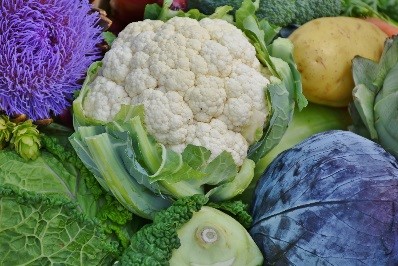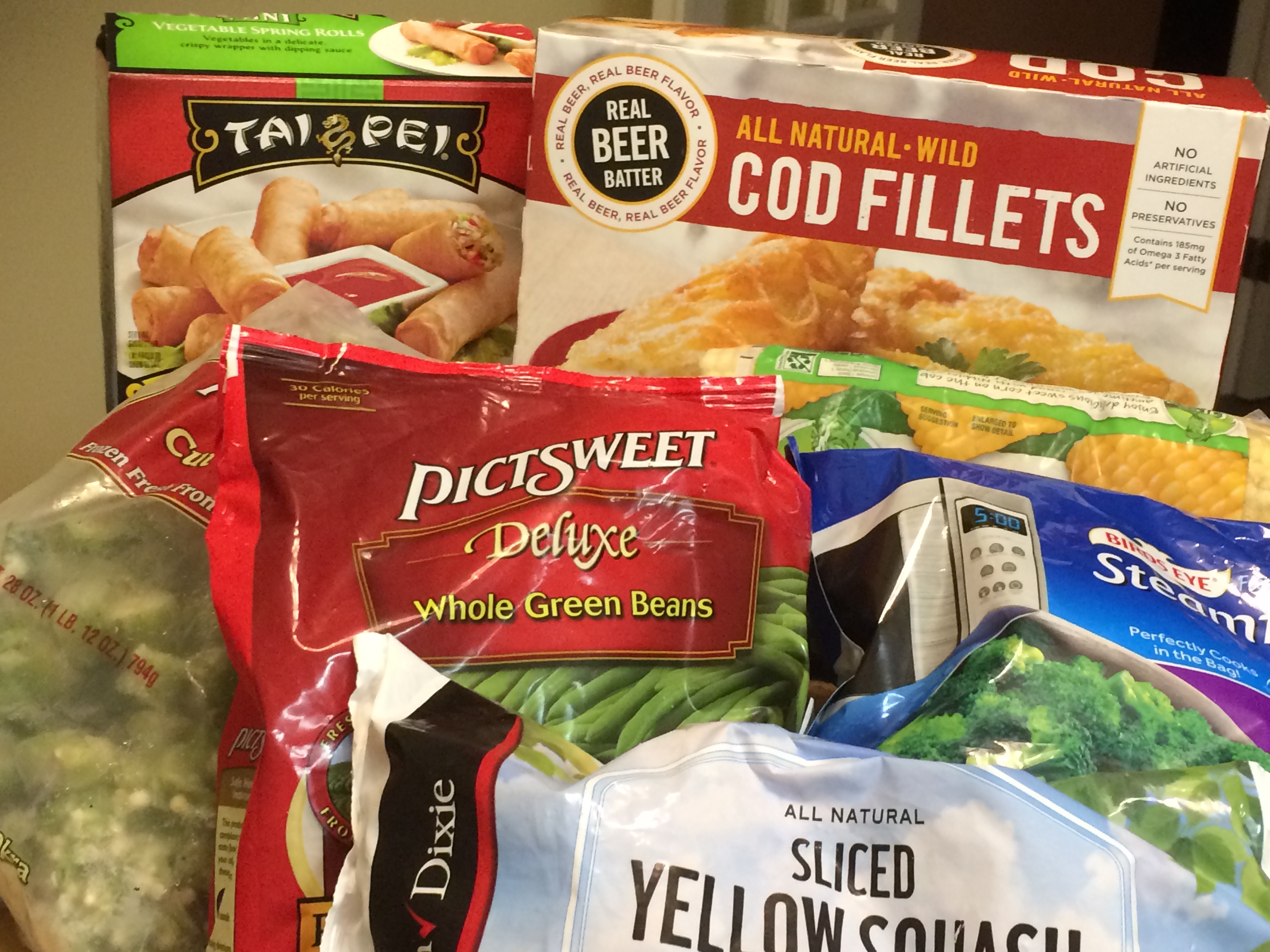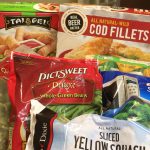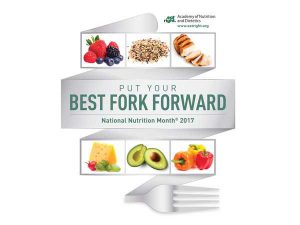
by Laurie Osgood | Mar 13, 2017
 Looking for a colorful and fresh side dish? Then you should try roasting your vegetables! Roasted vegetables are quick, easy, and flavorful. When roasted, vegetables become brown and crisp on the outside, making their natural sugars caramelize. This caramelization process makes the vegetables sweet and full of flavor. An added bonus of roasting your vegetables is that they require very little prep time.
Looking for a colorful and fresh side dish? Then you should try roasting your vegetables! Roasted vegetables are quick, easy, and flavorful. When roasted, vegetables become brown and crisp on the outside, making their natural sugars caramelize. This caramelization process makes the vegetables sweet and full of flavor. An added bonus of roasting your vegetables is that they require very little prep time.
Vegetables are an important part of our diet. The US Dietary Guidelines recommend that fruits and vegetables fill half our plate (USDA, 2015). Vegetables are packed with vitamins, minerals, and fiber, and are low in calories.
SOME SEASONAL VEGETABLES THAT ARE DELICIOUS WHEN ROASTED:
- Whole Cauliflower: Pull all the leaves off and remove part of the core. Add 1 tbsp. of olive oil into a pan, add the whole cauliflower, cut side down, and add salt and pepper. Roast at 400ºF for 45 minutes to an hour, until well-browned on the outside.
- Asparagus: Trim off the tough ends and put the spears in a pan with 1 tbsp. olive oil, salt, and pepper. Roast at 400ºF for 10-15 minutes, depending on thickness.
- Green Beans: Just like the asparagus. Trim off the tips, toss with 1 tbsp. olive oil, salt, and pepper. Add to pan, and roast at 400ºF for 15 minutes.
- Broccoli: Trim off the leaves and cut up into florets. Add 1 tbsp. olive oil, salt, and pepper. Roast at 400ºF for 35 minutes. When roasting broccoli, the florets will end up singed a bit, but the stalks will become soft, sweet, and delicious.
- Carrots: Peel carrots; cook them whole or split in half lengthwise. Add 1 tbsp. olive oil, salt, and pepper. Roast at 400ºF for 30-40 minutes.
- Brussels sprouts: Trim off the ends, toss with 1 tbsp. olive oil, salt, and pepper, and roast at 425ºF for 40 minutes. The sprouts will be crispy and wonderful when roasted.
Resources:
2015–2020 Dietary Guidelines for Americans: https://health.gov/dietaryguidelines/2015/
Florida Department of Agriculture and Consumer Services, Fresh from Florida website http://www.freshfromflorida.com/Food-Nutrition/Buy-Fresh-From-Florida

by Marie Arick | Mar 1, 2017
 With the mention of a frozen dinner, do you feel nostalgic and think of the options from when you were a child? When was the last time you perused the frozen food section of the grocery store? The freezer aisle now contains over 3,700 different food options, according to the National Frozen & Refrigerated Foods Association (NFRFA). Items range from your favorite ice cream to vegetables that are packaged and frozen at the peak of freshness. You can find a single-serving option or even a complete family meal.
With the mention of a frozen dinner, do you feel nostalgic and think of the options from when you were a child? When was the last time you perused the frozen food section of the grocery store? The freezer aisle now contains over 3,700 different food options, according to the National Frozen & Refrigerated Foods Association (NFRFA). Items range from your favorite ice cream to vegetables that are packaged and frozen at the peak of freshness. You can find a single-serving option or even a complete family meal.
The NFRFA touts “frozen foods include healthy produce, perfectly-portioned meals, a variety of ethnic cuisines and dishes to meet strict dietary needs.” Test kitchens are full of chefs creating meals that are available for the “hungry man” or for those seeking proper portions. The portion-perfect meals are dietician/nutritionist-approved and provide balanced options in a quick, convenient package.
If variety is something you seek, not a problem – the freezer section can provide this. There are breakfast, lunch, dinner, dessert, and even snack options available. Frozen meals also can help to decrease food waste, thanks to single-serving packaging options.
Are you concerned about the nutritional content of frozen fruits and veggies? According to the National Library of Medicine, whether fresh or frozen, “the single ingredient version of the same fruits and vegetables revealed relatively equivalent nutrition profiles.” Technology has optimized the freezing process, enabling vegetables to be packaged and frozen in a short window of time to preserve the integrity of the food and the nutritional content as well.
If you have not done so, give frozen food options a chance. Take a few extra minutes on your next trip to the grocer and look at the options available. The frozen foods cases are full of tasty, nutritious, and perfectly portioned selections that can be prepared in minutes for those hectic days when prepping and cooking a meal is not an option.
by Amy Mullins, PhD, RDN | Feb 21, 2017

National Nutrition Month® is a month-long nutrition education and information campaign that is put on by the Academy of Nutrition and Dietetics. This year’s theme is “Put Your Best Fork Forward.” The idea behind the theme is that every bite counts and that taking small steps to change our eating habits can result in positive, lifetime changes! This idea is one that every Registered Dietitian Nutritionist (RDN) is familiar with. RDNs are taught very early on that for a goal to be met, it is key that it is both achievable as well as personalized to their client’s eating style. Put Your Best Fork Forward is really about finding ways to be healthy that you enjoy.
National Nutrition Month® 2017 has five key messages that will help you find your healthy eating style.
- Create an eating style that includes a variety of healthful foods that you enjoy. As they say, it’s not nutrition if it’s not eaten!
- Practice cooking at home and be willing to try new, healthier ingredients. There are plenty of cooking apps and recipes available on eatright.org and other reputable internet sites. Pick one and give it your best shot!
- Follow MyPlate guidelines when building your meal. MyPlate replaced the Food Pyramid in the year 2011 and has a bigger focus on portion size and building a healthy plate at every meal.
- Finding physical activity that you enjoy is important. This can be playing with your pet, pacing while you talk on the phone or joining a team sport. Anything you will enjoy that gets you moving!
- RDNs are skilled in all things diet and are the best source of personalized nutrition advice for you. They are able to assist you in making healthful changes that you’ll enjoy making!
Some examples of small changes in eating patterns are to: exchange a whole grain for a refined grain once a week, eat dinner in the dining room on Fridays, or plan to enjoy a home-cooked meal twice a month. These changes should be incorporated until you feel comfortable with them. Then, they could be changed to eating whole grains twice a week, eating dinner in the dining room Thursday and Friday or eating a home-cooked meal once a week. These modest shifts in our eating patterns can become healthy habits we enjoy for life.
Resources:
Academy of Nutrition and Dietetics
http://www.eatright.org/
MyPlate Website
https://www.choosemyplate.gov/
Contributing author – Sydney Nutting, FDACS Intern, Spring 2017
by Marie Arick | Feb 14, 2017

Knowing your waist circumference is a simple way to determine if you are at risk for heart disease. A waist circumference larger than 40 inches for men or 35 inches for women deems a person overweight per National Institute of Health (NIH) guidelines.
It is commonly known that being overweight is associated with a barrage of health problems such as heart disease, hypertension, diabetes, and even some cancers. Where those extra pounds are carried is important to note. When those pounds are concentrated around the waist, it “is an indicator of the level of internal fat deposits which coat the heart, kidneys, liver, digestive organs and pancreas” according to the Heart Foundation, versus carrying those extra pounds on your thighs and/or hips.
Waist circumference is a good indicator to utilize. It has been discovered in many cases that Body Mass Index (BMI) can overestimate body fat in certain people with high amounts of muscle mass. According to the NIH, “the good news is even a small weight loss, between 5 and 10 percent of your current weight, will help lower your risk of developing diseases.” Weight loss should be conducted in a healthy manner and incorporate physical activity. The Choose MyPlate website provides free exercise and dietary tracking and great practical information to aid in one’s journey.
The really simple way to predict your risk for heart disease can be as easy as measuring your waist. Taking a few moments to complete this task can be an enlightening step in managing your health and possibly prevent you from ‘waisting’ your heart away.
by Heidi Copeland | Nov 30, 2016
 Many of us can agree, being around family can make simple things in life more special! Whether it’s time spent together during holidays, celebrating birthdays, or simply enjoying togetherness, family events can make life memorable. Why wait until special occasions to show your family that they matter? Dining together can make simple things feel special every day!
Many of us can agree, being around family can make simple things in life more special! Whether it’s time spent together during holidays, celebrating birthdays, or simply enjoying togetherness, family events can make life memorable. Why wait until special occasions to show your family that they matter? Dining together can make simple things feel special every day!
Dining in with your family is one of the easiest ways to incorporate spending quality time together… on a daily basis. Knowing that schedules can make this task very difficult to implement but understanding the benefits will help encourage us to make the time for this important ritual. Research studies show that frequent, positive mealtime experiences can lead to better communication among family members, improved performance at school, and enhanced reading levels, as well as better overall nutrition. During meals, parents are able to teach their children how to actively listen and express themselves through conversation. As a result, these mealtime conversations expand children’s vocabulary and increase their reading skills. Equally important is that eating together helps encourage healthy eating habits.
Make plans to set aside December 3, 2016 as Dine in Day. This initiative, started three years ago by the American Association of Family and Consumer Sciences (AAFCS) promotes the importance of group meals in fostering family and community relationships, encouraging healthy diets and stretching food dollars. AAFCS cares about family mealtimes and is spreading awareness.
Here are some Dine In Day conversation starters and tips to create an enjoyable and relaxing atmosphere for your family:
- Start with minimal distractions. Turn off all devises…televisions, iPads, laptops, and set aside cell phones.
- For families with preschoolers here are some conversation starters
- If you could be any animal in the world for a day, which animal would it be? Why?
- What made you happy (or sad) today? Why?
- Who did you sit next to (or play with) at school today? What did you talk about?
- Would you like to help plan dinner for tomorrow night? What foods would you like to help cook for dinner?
- For families with adolescents and young adults here are some conversation starters
- Ask about their hobbies, clubs, or extracurricular activities
- If you could have one day free of all responsibilities what would you do?
- Share funny stories and discuss light current events
Remember, eating together matters. Try to create a positive atmosphere before and during meals.
- Respect and involve every family member giving everyone an equal opportunity to share an opinion without teasing or criticizing.
- Download free conversation starters at www.school-wellness.org
- Background music can be a nice addition!
Individuals, families and groups can pledge to dine in December 3 at http://bit.ly/2dPj58G . Diners can also participate on social media by sharing photos and using the hashtags #FCSdayFL and #healthyfamselfie.
Build stronger relationships and positively impact your children’s growing values. Don’t wait until special occasions to reap the dining together benefits, dine in now!
For more information on the importance of family meal
- Lyttle and E. Baugh, The Importance of Family Dinners (FCS2286), Department of Family, Youth and Community Sciences (Archived).
- Paredes and K. Shelnutt, Raising Healthy Children: The Importance of Family Meals (FCS8925), Department of Family, Youth and Community Sciences (06/2010).
Tamarah Ulysse FSU Intern, Family and Child Sciences
Edited by: Heidi Copeland
Extension Agent I
Family and Consumer Sciences
615 Paul Russell Road
Tallahassee, FL 32301-7060
850/606-5200

 Looking for a colorful and fresh side dish? Then you should try roasting your vegetables! Roasted vegetables are quick, easy, and flavorful. When roasted, vegetables become brown and crisp on the outside, making their natural sugars caramelize. This caramelization process makes the vegetables sweet and full of flavor. An added bonus of roasting your vegetables is that they require very little prep time.
Looking for a colorful and fresh side dish? Then you should try roasting your vegetables! Roasted vegetables are quick, easy, and flavorful. When roasted, vegetables become brown and crisp on the outside, making their natural sugars caramelize. This caramelization process makes the vegetables sweet and full of flavor. An added bonus of roasting your vegetables is that they require very little prep time.




